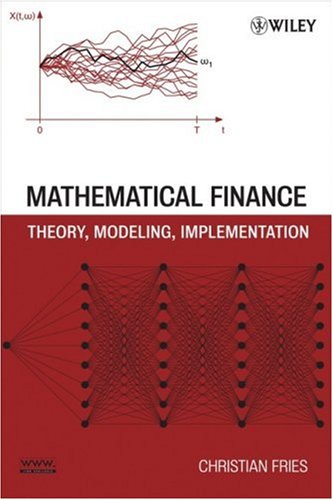

Most ebook files are in PDF format, so you can easily read them using various software such as Foxit Reader or directly on the Google Chrome browser.
Some ebook files are released by publishers in other formats such as .awz, .mobi, .epub, .fb2, etc. You may need to install specific software to read these formats on mobile/PC, such as Calibre.
Please read the tutorial at this link: https://ebookbell.com/faq
We offer FREE conversion to the popular formats you request; however, this may take some time. Therefore, right after payment, please email us, and we will try to provide the service as quickly as possible.
For some exceptional file formats or broken links (if any), please refrain from opening any disputes. Instead, email us first, and we will try to assist within a maximum of 6 hours.
EbookBell Team

4.7
36 reviewsThe ever-growing use of derivative products makes it essential for financial industry practitioners to have a solid understanding of derivative pricing. To cope with the growing complexity, narrowing margins, and shortening life-cycle of the individual derivative product, an efficient, yet modular, implementation of the pricing algorithms is necessary. Mathematical Finance is the first book to harmonize the theory, modeling, and implementation of today's most prevalent pricing models under one convenient cover. Building a bridge from academia to practice, this self-contained text applies theoretical concepts to real-world examples and introduces state-of-the-art, object-oriented programming techniques that equip the reader with the conceptual and illustrative tools needed to understand and develop successful derivative pricing models.
Utilizing almost twenty years of academic and industry experience, the author discusses the mathematical concepts that are the foundation of commonly used derivative pricing models, and insightful Motivation and Interpretation sections for each concept are presented to further illustrate the relationship between theory and practice. In-depth coverage of the common characteristics found amongst successful pricing models are provided in addition to key techniques and tips for the construction of these models. The opportunity to interactively explore the book's principal ideas and methodologies is made possible via a related Web site that features interactive Java experiments and exercises.
While a high standard of mathematical precision is retained, Mathematical Finance emphasizes practical motivations, interpretations, and results and is an excellent textbook for students in mathematical finance, computational finance, and derivative pricing courses at the upper undergraduate or beginning graduate level. It also serves as a valuable reference for professionals in the banking, insurance, and asset management industries.